Alexandre Mazzia was born and grew up until the age of 14 in a coastal area of Congo with his wood-trader father, and initially contemplated a career in basketball. Mr Mazzia played as a shooting guard for the French under-23 team, but after an injury decided instead on a career in food. He trained with famed pastry chef Pierre Herme amongst others. After a stint as a private chef, in 2004 he worked at Abac with Xavier Pellicer, then at Michel Bras and other restaurants, moving in 2010 to Marseilles to a restaurant called Le Ventre de l'Architecte. He opened AM in 2014, receiving a first Michelin star in 2015, a second in 2019 and a third star in 2021. The restaurant has just two dozen covers, and his cuisine makes use of spices, smoke and of course the fish and seafood nearby in the Mediterranean.
The restaurant seats just two dozen diners, situated in a residential area of Marseilles, on a quiet side street that has a branch of the Paul coffee shop chain on the corner. Tasting menus of increasing length were available at €275 (£238) at lunch only, or in the evening either at €335 (£289) or €395 (£342). The dining room felt quite casual: no starched tablecloths here. There was an open kitchen, and a couple of seats were positioned directly opposite the kitchen so that the workings of the chefs could be observed. In total, 23 chefs worked in the seemingly quite small kitchen, presumably not all at the same time.
As often in France, the wine list is regarded as some sort of state secret rather than something to be shared with diners in advance of the meal. Sample vintages were Ferme du Mont Benauly K Blanc 2019 at €70 for a bottle that can be found in the high street for €16, Domaine Les Beates Terra d’Or 1999 Rouge at €120 compared to its retail price of €48, and Domaine des Milles Vignes Fitou Atsuko 2017 at €170 for a bottle that will set you back €44 in a shop. At the posh end of the list pricing was rather erratic. There were some bargains, such as the lovely Clos Rougeard Le Bourg 2014 at €370 compared to its current market value of €690, while Chateau Montrose 2016 was €800 for a wine that retails at €220, and even the local Domaine de la Grange des Peres IGP Pays d'Herault 2002 was €1,080 compared to its shop price of €460.
The cooking style is for a series of serving stages, each with numerous elements. It is a little like eating at Pierre Gagnaire (who is noted for his multiple riffs in each ingredient) but on steroids. To begin with an array of canapés appeared. Raw snapper was presented with toasted yeast crumb and then sprayed from a perfume jar with essence of pickled bonito. The fish was fine but the overall effect was quite salty, though not excessively so. Then there was caramelised cabbage leaf crystallised with saffron and a bottarga ginger condiment involving burnt mackerel head. This was pleasant, the ginger adding an interesting extra dimension of flavour. Alongside was a little glass containing crayfish, blackberries and edible flowers with a consommé of root vegetables and sumac. This was fine but unmemorable. More interesting was an edible wrapper of sweet and sour courgette with potato leaf and cider paste, which sounds odd but actually worked rather well. This was served next to a biscuit base flavoured with galangal topped with slices of Limousin beef served in two ways: one was slightly burnt and the other marinated with soy sauce, along with Campari jelly. The beef was very good and the cracker provided a pleasing textural contrast to the beef. There was also crystallised seaweed with sweet potato, liquorice and bottarga, whose flavours combined well. There was also Parmesan with pistachio and pomegranate and aloe vera, which was harmless but somewhat unmemorable. Finally, there was grey shrimp with chilli oil and the Japanese condiment katsuobushi combined with the head juices of the grey shrimp. This was very good indeed, the spices combining well with the natural sweetness of the shellfish. Remember that all this was just the selection of canapés, so prepare yourself for a lengthy menu journey here (on average, just about 17/20).
The next serving also had numerous elements. A little glass contained wild trout and salmon eggs with hazelnuts marinated with sake and some smoked milk. This worked quite well, the nuts adding an interesting textural contrast to the fish eggs. Vegetal shortbread came with cream of flying fish eggs, herbaceous and iodine ointment and organic flowers, which sounds seriously odd but somehow worked quite well, and was prettily presented. This was accompanied by a smoked eel tartlet with dark chocolate and some undeclared spice, which again sounds bizarre but was very enjoyable, the bitterness of the chocolate somehow combining well with the flavour of the eel, the touch of spice marrying the elements together in an unexpected yet pleasing way. This came with Viennese bread with combava butter. Alongside this was a dish of mussels, herring and mackerel with beetroot, coconut and a mojito tarragon condiment, all resting in a bright green jus of rocket and diplotaxis, a flowering plant in the brassica family, enlivened by a touch of spice. This was lovely, the seafood combining well and complemented well by the rocket jus, which had a lot of depth of flavour and a pleasing kick of spice. The bread accompaniment to this stage of the meal was focaccia with peanut butter, espelette pepper and liquorice, and a black cumin and spicy butter. Served on a spoon was spider crab meat and sea bass that had been marinated in sake and beetroot. The crab had very good natural sweetness and paired well with the bass with its hint of earthy beetroot from its marinade. Mussels, mackerel and herring were flavoured with coconut and mojito tarragon condiment, the flavours combining well. Semolina couscous was flavoured with orange blossom, enlivened by horseradish and jus of the crab head and shell. This was lovely, the gentle bite of the horseradish nicely lifting the intense flavour of the jus (18/20 for this stage).
The next sequence of dishes followed. In a glass teapot was a broth of miso consommé, the teapot decorated with oyster shells. The broth itself was lovely, with deep flavour, a very good and light miso soup. On a side plate was a sphere of brioche flavoured with sardine and lardo di colonatta (pork fat), ginger condiment and grapefruit with a touch of spice. This sounds unpromising but actually worked quite well, the bread texture good and the grapefruit sharpness balancing the richness of the pork fat. Next to this was a plate of gamberoni prawns from Spain, three little slices of the prawn tail each with a pool of different accompanying sauces. One was beurre blanc with plankton, the next was saffron and coffee, and the last was a spicy jelly with lardo di colonatta, which tasted a little like a sweet and sour sauce. The prawn was lovely and the sauces were each quite an effective pairing for the sweetness of the shellfish. A separate dish was smoked cauliflower with avocado, chicken skin, edible flowers, shellfish jus made from the prawn shell, and “dragon milk” made from carrot. This was quite an interesting mix of textures and flavours, which again sounded odd but was very enjoyable to eat (19/20 for this stage of the meal).
The next sequence of dishes was preceded by what look like a pretty broth with herbs and flowers but was in reality just a finger bowl, as this set of courses involved getting a little messy. There was also a powder of a striking green colour that turned out to be made from plants cooked in sea water and then dried to a powder.
The first dish element was fried crayfish with seaweed popcorn, geranium flower and lemon condiment, which had very good flavour and a nice texture contrast provided by the popcorn. Crayfish was also offered with a cassava gel with carrot and egg nog jus cooked in rice vinegar with cumin, which was also pleasant albeit not as good as the fried crayfish. A rather spectacular candy floss dish appeared next, the floss made with plankton and containing vegetable “pasta” flavoured lightly with curry and either a central oyster or a prawn substitute for those avoiding oysters. This was a fun dish, quite theatrical and yet also tasting good, with a pleasing contrast of textures from the different elements (18/20).
There was now a final sequence of savoury dishes. Green beans had been barbecued with onions and satay and lardo di colonatta, along with verbena and duck and pepper jus with a blob of raspberry jus flavoured with harissa. Spinach tempura was rather clunky, with quite thick and heavy batter compared to the kind of tempura that you would encounter in Japan. Inside the batter, in addition to spinach, were some smoked pike eggs, chilli and shellfish dust. This dish did not work that well for me due to the crude tempura. Alongside this a dish of was preserved onions with girolles and mortadella, as well as corn bread with tarragon and a green tea mousse. Separately was a dish with courgette flower, cashew nuts and spicy “ointment”, with a little passion fruit, with a garnish of crystallised aubergine, which was pleasant but unexceptional. There was also a dish of spinach leaves, more vegetable pasta flavoured with curry, pork and beetroot jus and mushroom mousse. This combination worked very well. On the side was a little bowl with horseradish and wasabi ice cream, which was lovely (18/20 for this stage).
There was a transition to dessert with Camembert marinated with oyster juice and sake juice, which seemed a peculiar idea. None of the other three highly experienced diners on our table could eat it. I was avoiding oysters so wasn’t served it and so I won’t score it but, but based on the horrified reactions of my fellow diners that did try it, this is a dish that divides opinion, to say the least. It doubtless has its fans.
We now reached the dessert stage of the meal. Presented on a spoon was raspberry flavoured with harissa, the chilli paste from the Maghreb. This was an interesting idea but I was surprised at just how much harissa was used, the initial taste of the fruit then quickly overpowered by the very strong kick of chilli. Canale cake was flattened out and presented with crystallised rice leaf and plum with hibiscus flower and tamarind cream. Alongside this was a bowl containing a dish of sweet potato with mango, date and verbena water. Accompanying this was a black bowl containing banana cream with mango sorbet, puffed rice, caramelised peanuts and kumquat. There was also a spoon containing matcha ice cream, but this was rather grainy. The dessert stage of the meal is often challenging in modernist restaurants and this was no exception. At this stage of a meal most people (or at least me) are looking for something reasonably comforting rather than to be challenged by wacky ingredient combinations (desserts 13/20).
There was also an array of petit fours. Pineapple and saffron sorbet was dusted with citrus powder. There was a smoked and grilled corn meringue with frozen corn, 25-year aged balsamic vinegar and some salt. Curiously successful was sweet potato and spicy ointment with raspberry, lemon, basil and passion fruit. There was also was a pleasant enough combination of mango, guava, sweet potato and crystallised ginger. A spoon contained avocado and fennel with mustard beans and ginger sugar. There was watermelon with basil leaf jelly with Get 27 mint liqueur condiment. Another petit four was melon ice cube with melon that had been sprayed with citrus, green curry and gin. Coffee was from Guatemala and had nice acidity.
Service was charming, the staff patient and showing good training and familiarity with the dishes as they recited the lengthy dish descriptions. The bill came to €624 (£540) per person, at least after they removed the duplicate wine bottles that initially appeared on the bill - in this case seeing double was not due to the alcohol. If you opted for the shorter menu and just shared a modest bottle of wine then you could potentially leave with a cost per person of around €380 (just under £330).
Steeping back for a moment, let me compare this meal with the those of the greatest and most talented modernist chefs, who for me are the trio of Mark Veyrat, Sergio Herman and Grant Achatz. They all broke culinary boundaries in their different eras, producing food that no one had ever eaten before. What was remarkable about that trio, and what sets them apart as giants amongst modernist food, is that the dishes that they created were almost entirely not only inventive but thoroughly enjoyable to eat. That last element, of consistent enjoyment, eludes most chefs that follow this path. Even at El Bulli, undeniably inventive and influential, there were plenty of dud dishes amongst the numerous hits, as even fans of the place would acknowledge. AM is undeniably inventive, and in amongst the many dishes tonight were some very enjoyable ones, but there were also some that were less so, and others that were merely ordinary. Real slips were rare, and overall the standard of dishes was quite high. Staff were lovely and the place has a nice atmosphere, so this is certainly a restaurant that has plenty to offer the adventurous diner.









































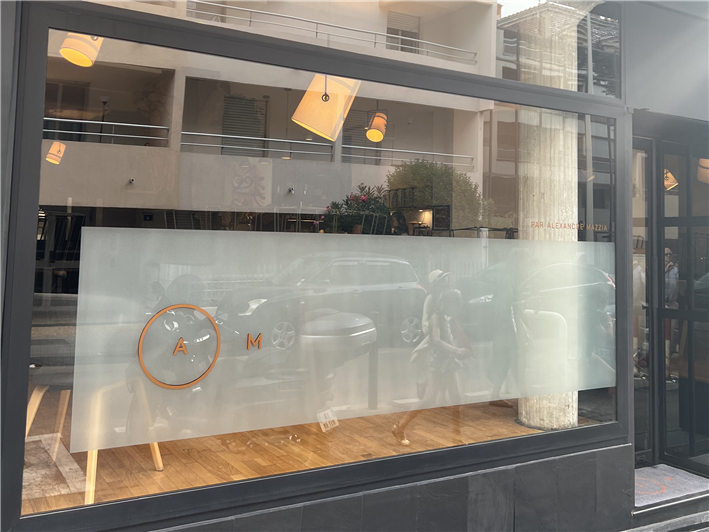


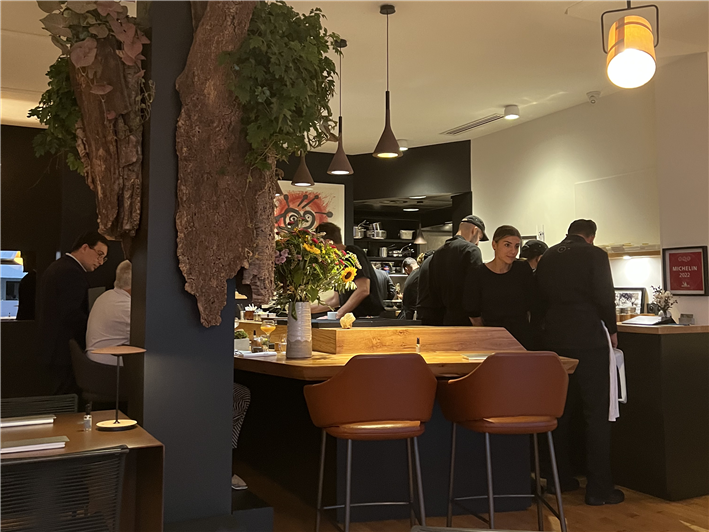


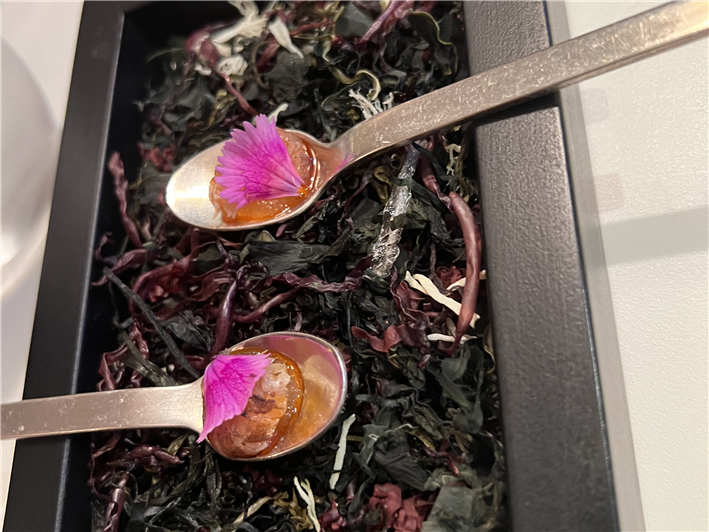
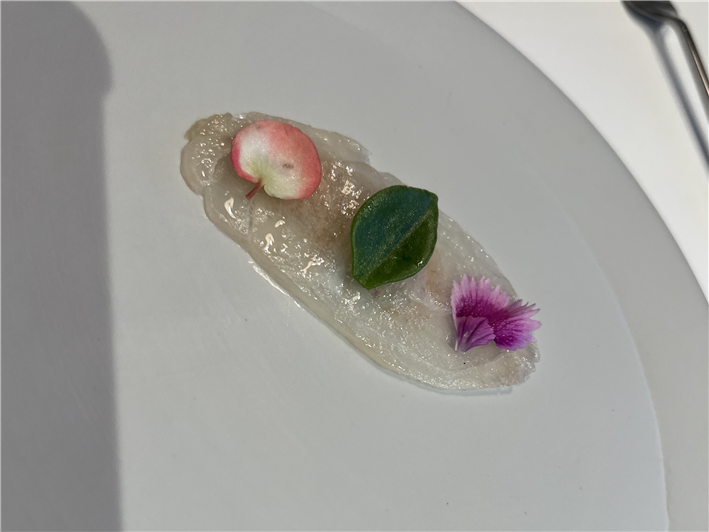
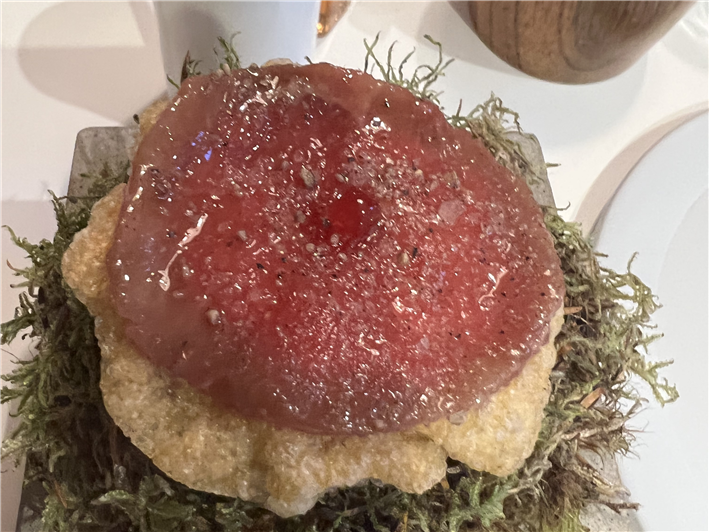
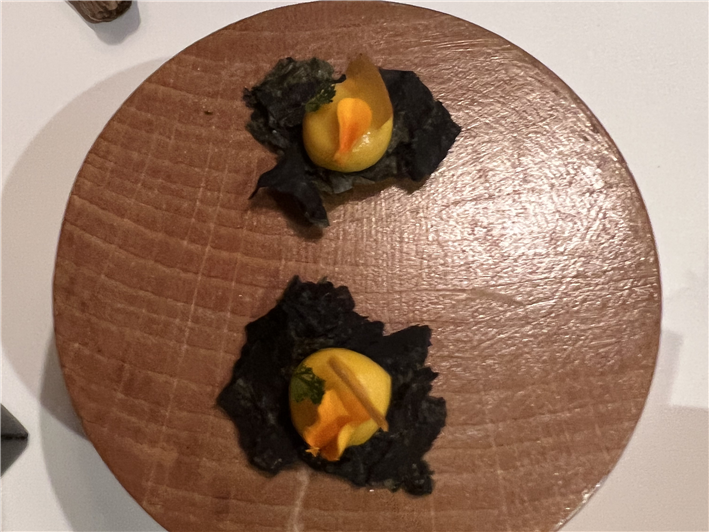
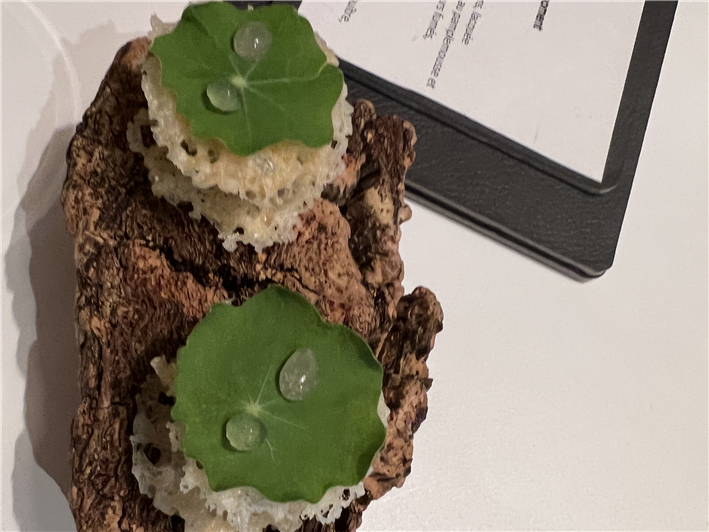
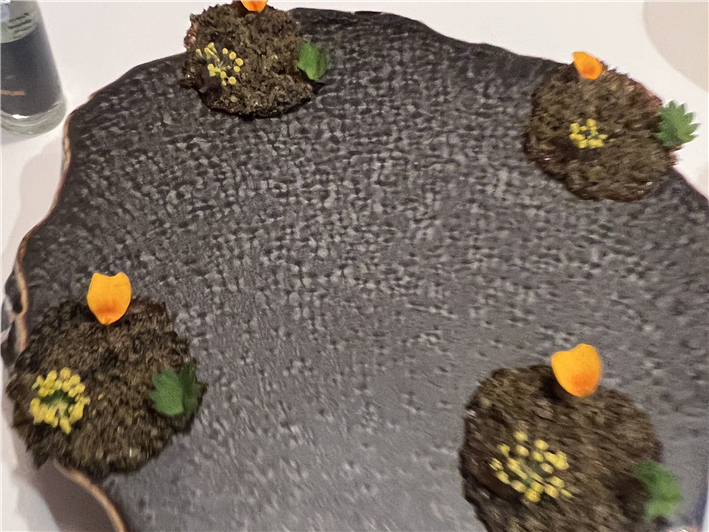
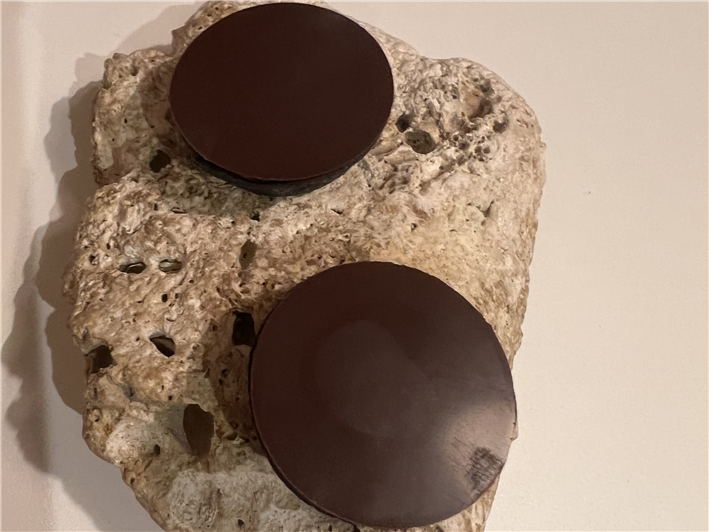
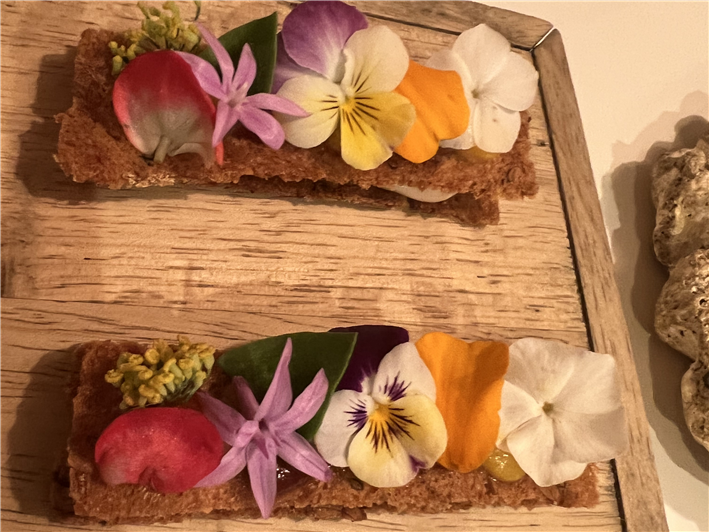


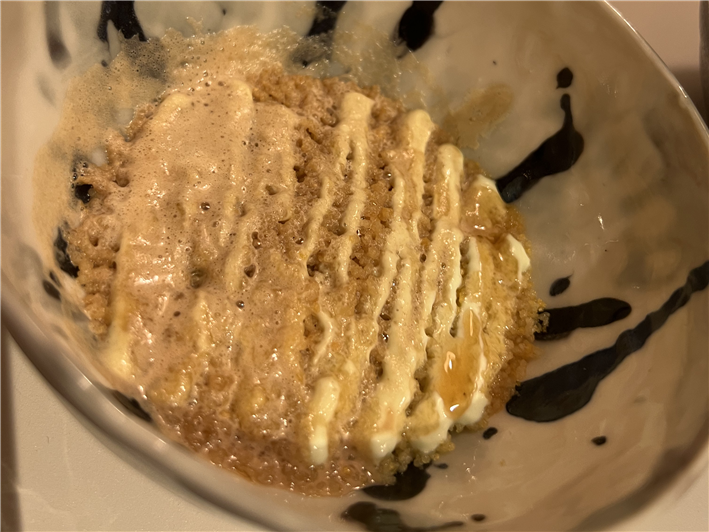

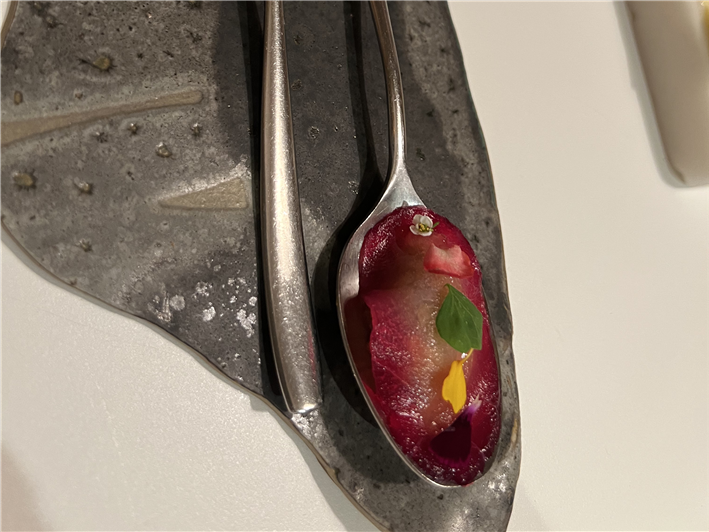
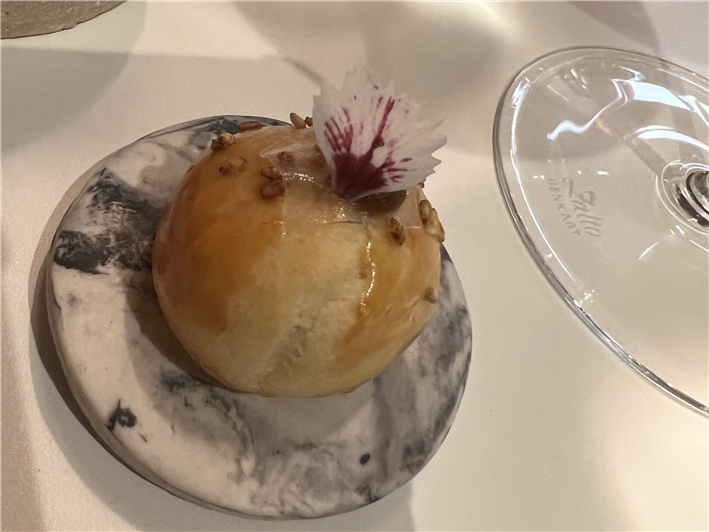
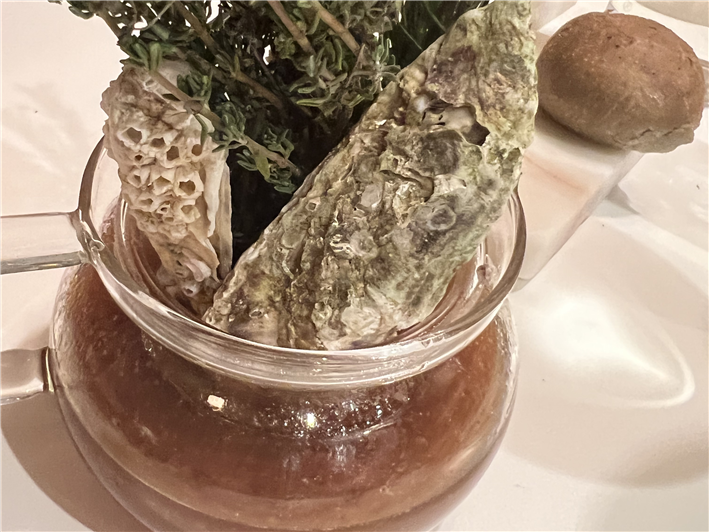
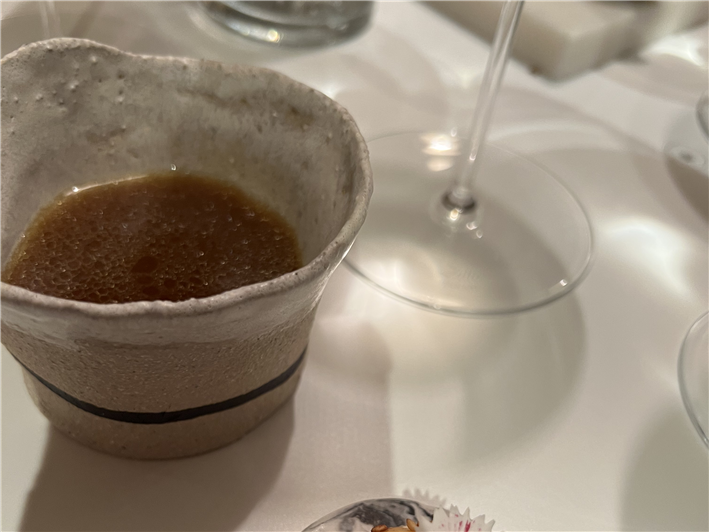
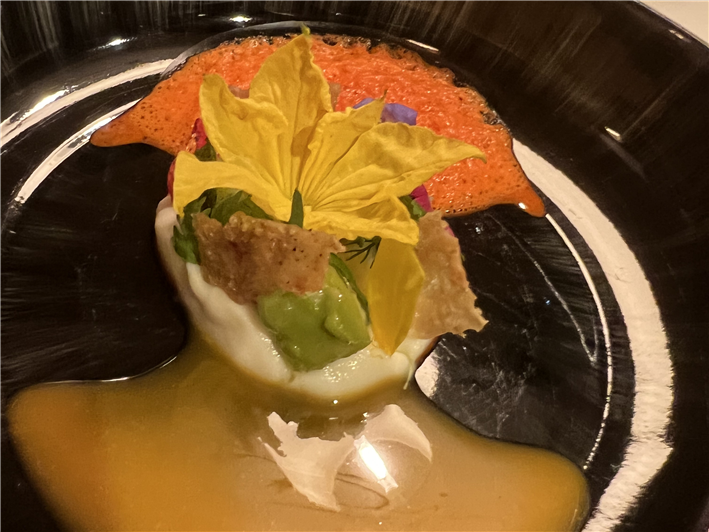
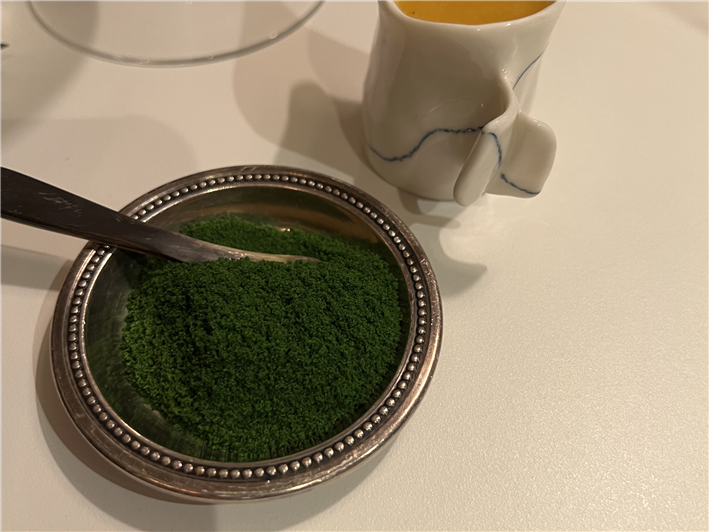
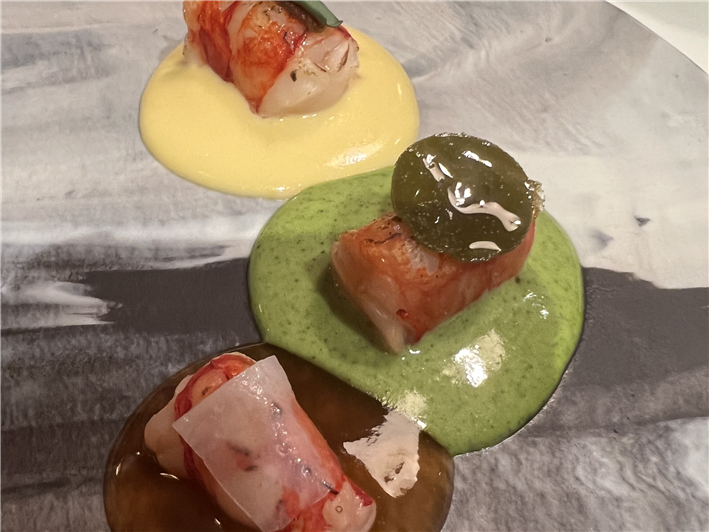
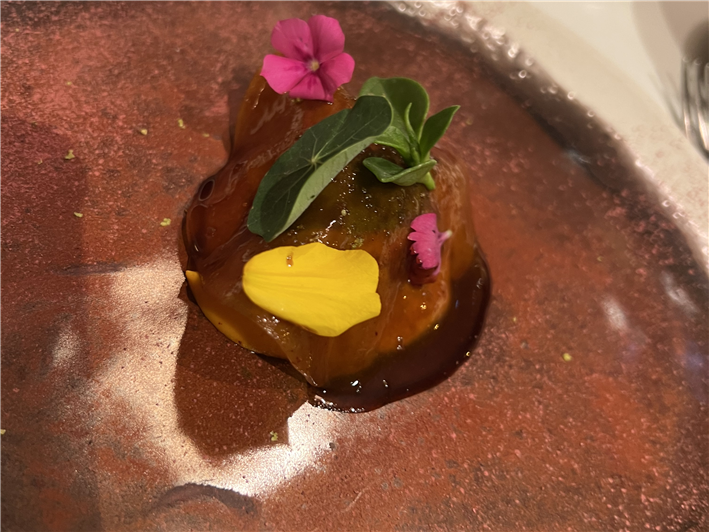
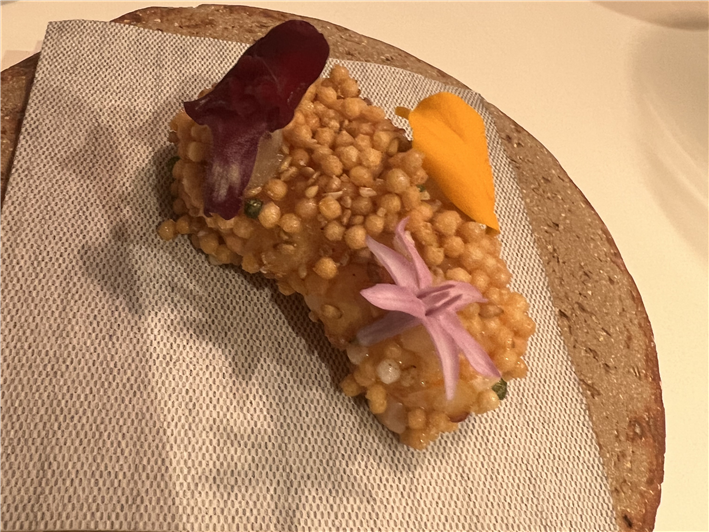
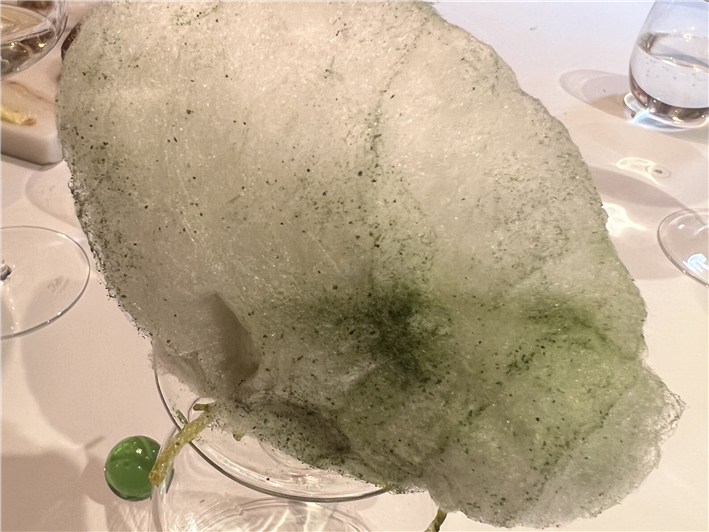
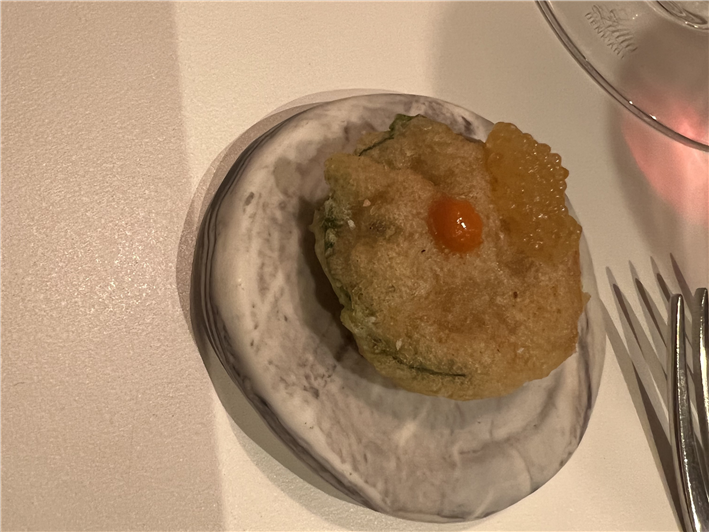
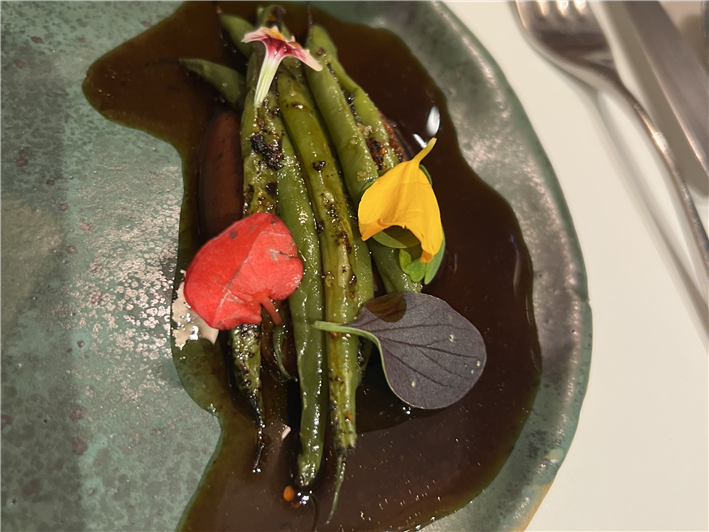

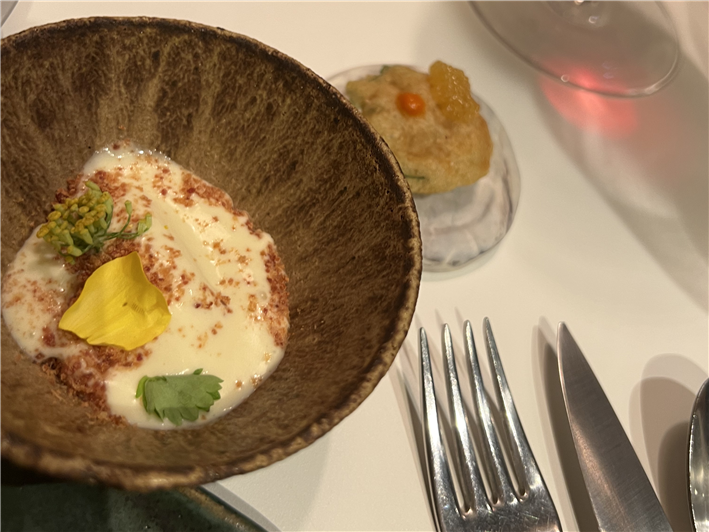
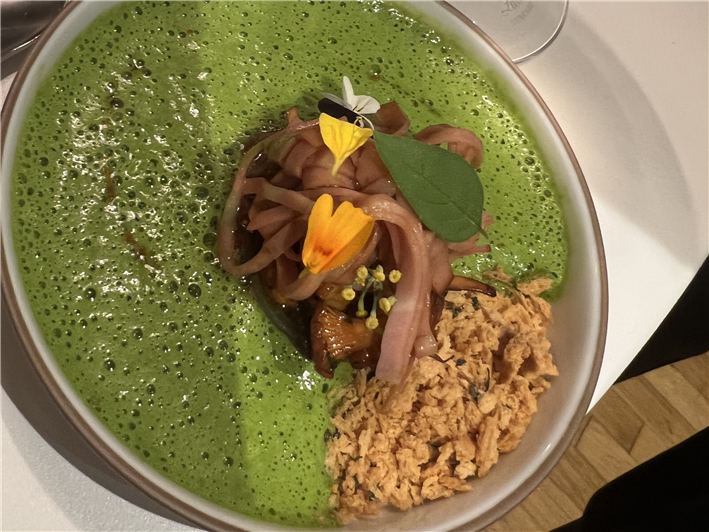
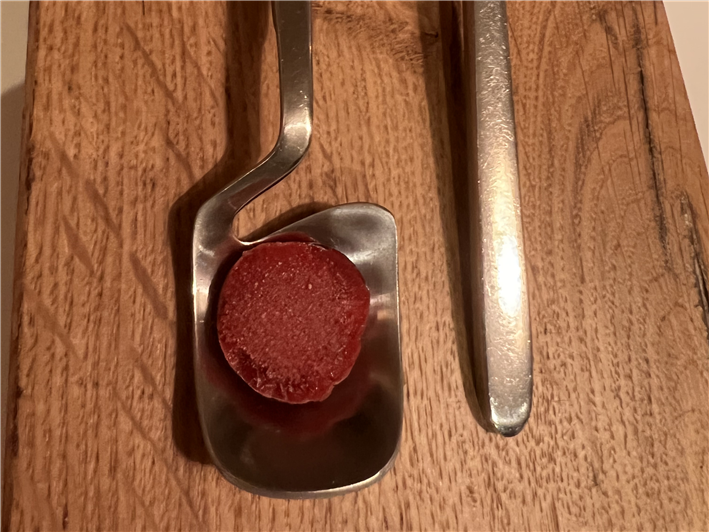

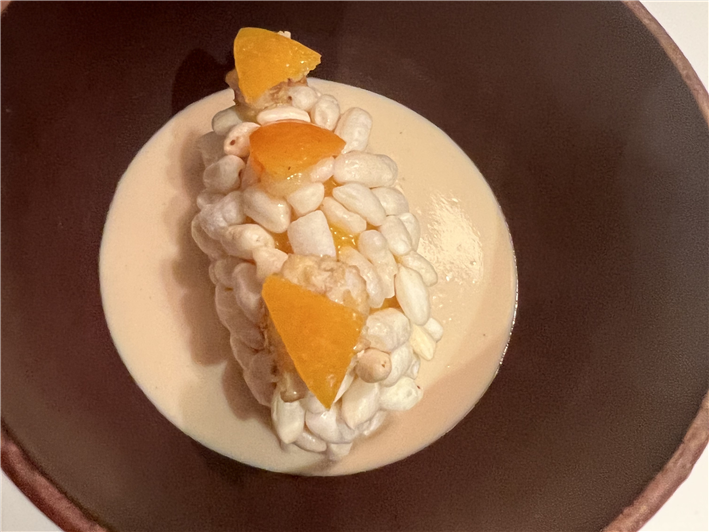

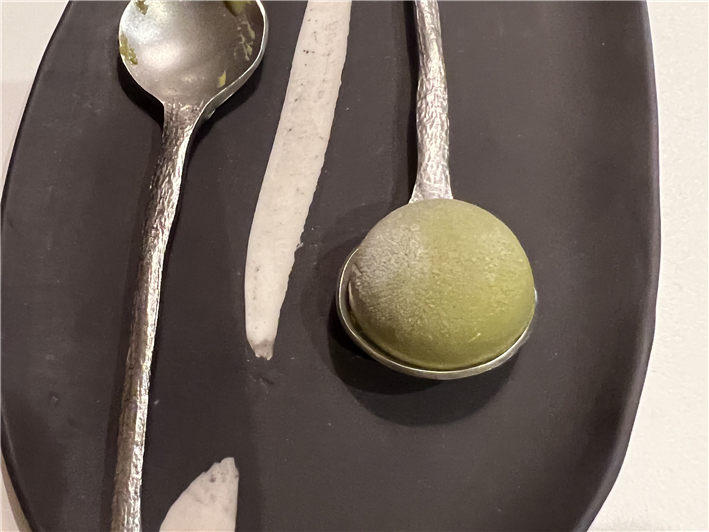
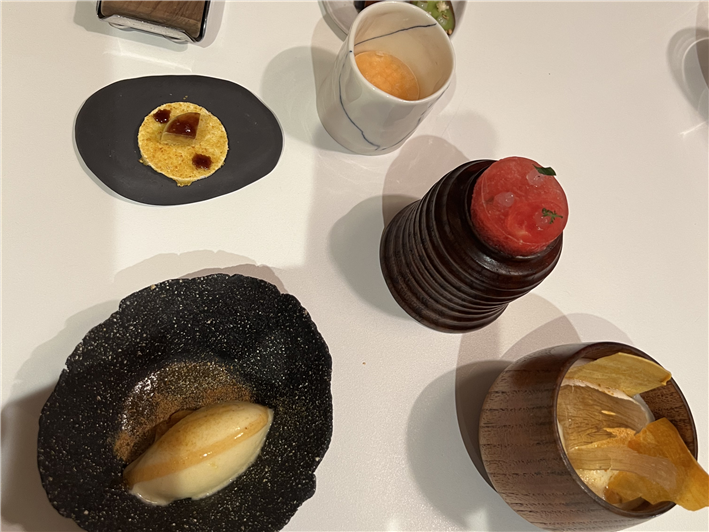


Add a comment
Thank you for submitting your comment, this will be checked and added to the website very soon.
User comments